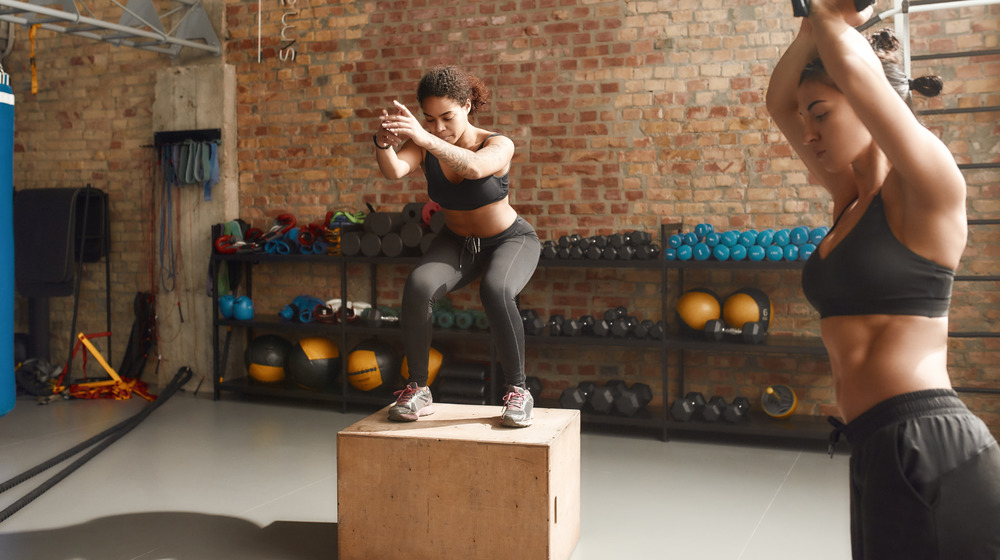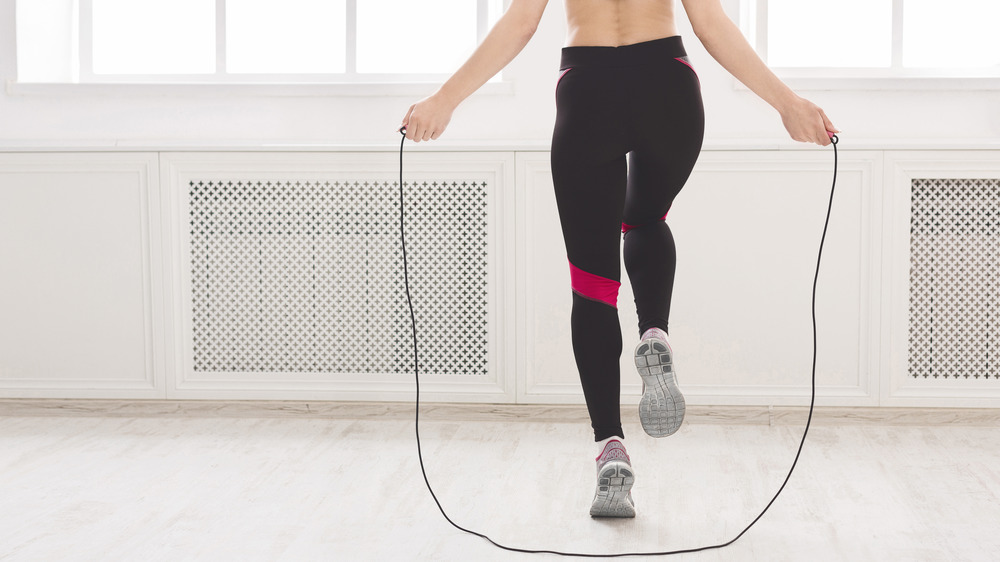Why You Really Need Plyometrics In Your Workout
You might not recognize the word plyometrics, but there's a good chance you have experience with this little family of exercises. They're popular in gym classes throughout America. Jumping jacks, burpees, frog jumps — just about any exercise with explosive bursts of motion followed by short rests falls into the plyometrics category. Women's Health has a list of ten great plyometric exercises that hit nearly every skill level, most of which you aren't likely to find in your average gym class.
But what makes plyometrics so great? True, they mesh perfectly with a HIIT schedule, but it's more than that. A 2016 study performed by a number of Tunisian universities found that regular plyometrics training could improve an athlete's overall physical fitness. Improvements included endurance, stamina, cardiovascular health, and sharper body movements.
Of course you don't need to be an athlete to see these benefits, and the exercises don't have to be done every day. In fact, Ace Fitness suggests leaving a 48-hour rest period between plyometric-heavy workouts since they have such intense effects on the body. Plyometrics put a lot of strain on your muscles and heart. And while this is a good thing — it's what strengthens your muscles, after all — your body needs time to recover between workouts. Without that rest window, you're likely to hurt yourself.
Getting started with plyometrics
Before you dive into a full plyometrics workout, however, you need to build a solid foundation. The Hospital for Special Surgery, a New York-based orthopedics hospital, has several recommendations on how to get into plyometrics without risking injury.
The first recommendation is to start at a low intensity. Jumping rope is a form of plyometrics because of the sharp, sudden jumps you make to clear the rope. It is a great starting point because it's something familiar to most people, the technique is straightforward, and it doesn't require a lot of equipment.
Another familiar plyometric exercise to start out with is the jumping jack. It burns a surprising number of calories and is easy to work into most workout routines. Best of all, jumping jacks pack in a lot of the sharp movement that sets plyometric workouts apart.
Be sure not to overdo it as you start your new routine. One 2004 study from researchers at several American colleges emphasized the way plyometric motion strengthens muscles by putting them under bursts of strain. Another from the University of Tokyo in 2017 found that the same strain helped strengthen tendons and joints, which could reduce injury over time.
Plyometrics might not be your favorite exercises. It's hard to find many people that like burpees, after all. But they're effective, space-efficient, and most of all, beneficial. From reducing injury to promoting cardiovascular health, they cover all the bases of a solid, well-rounded workout.


